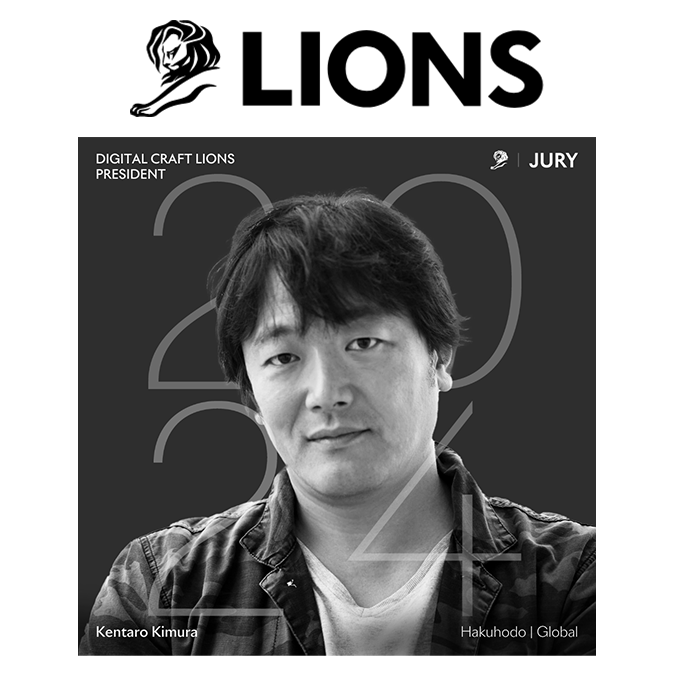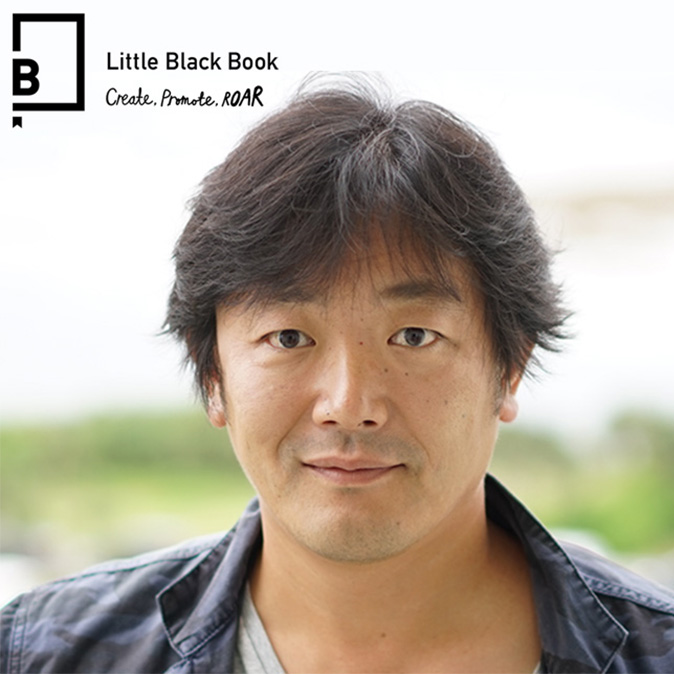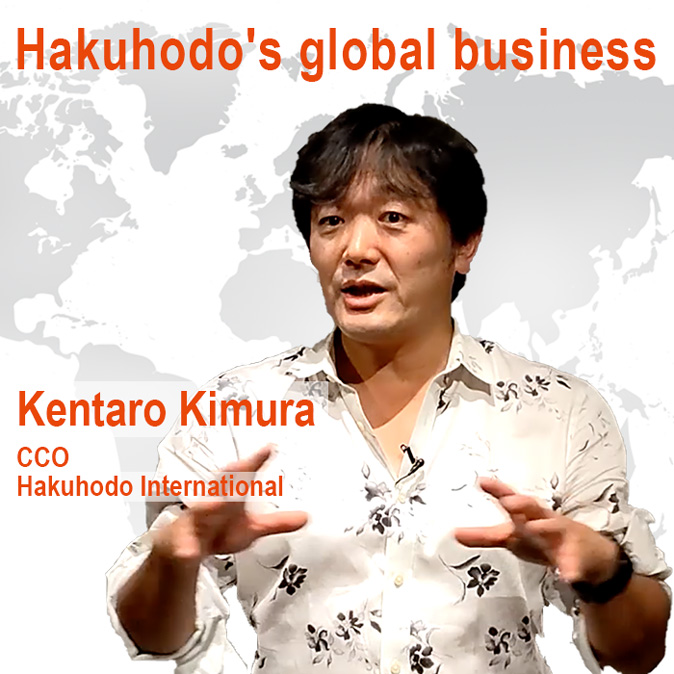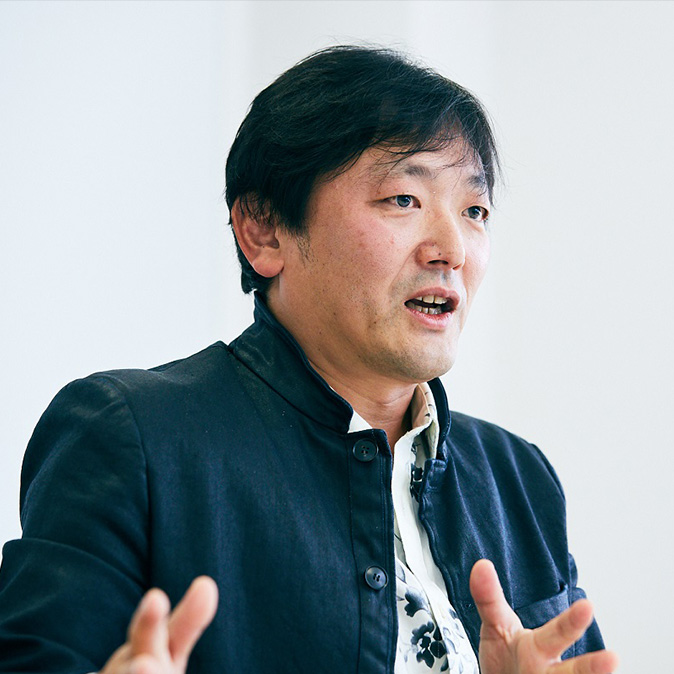- Reportage
Source: AD-Z magazine
Can Al replace creativity/advertising? This was a topic discussed by many speakers at AdAsia 2023 Seoul. There was also the opinion that there are areas which can not be replaced by Al. Hakuhodo’s Kentaro Kimura firmly believes in the power of human creativity, a creativity that can not be replicated by AI, which is based on local culture that can resonate across the world.
The belief that unprecedented creativity could be created by analyzing local elements and understanding the context, AD-Z magazine interviewed Kentaro Kimura. Let’s take a look at his thoughts, which he analyzes closely and challenges boldly.
Kentaro Kimura
Hakuhodo Corporate Officer / Hakuhodo International Chief Creative Officer
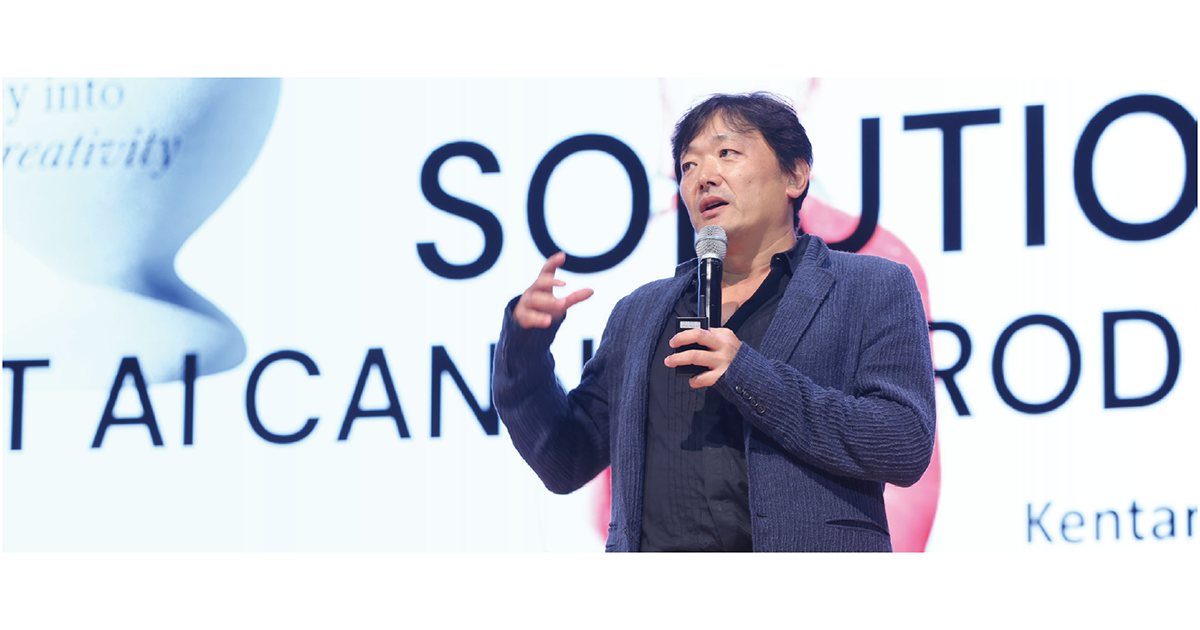
Please briefly introduce yourself.
My name is Kentaro Kimura, and I work at Hakuhodo, where I am responsible for the creative and global divisions and lead customer operations at Hakuhodo Kettle.
I heard that you visited Korea for the first time in four years. What was your impression when you visited?
I think a city where many people are smiling is a good city. The night I arrived in Korea, I was walking alone on the streets of Myeong-dong, and I saw a lot of people hanging out next to each other. I thought that Korea was indeed a great place. (Laughs)
The main trends of the conference were divided into ‘Generative AI can replace most of the advertising work’ and ‘There are creatives that AI cannot replace.’ we would like to hear in more detail the reasons for the opinion that ‘there are creative aspects that AI cannot replace.’
The photo-typesetter (a machine that assembles font to create text and graphics) and analog film developers have been replaced by computers. However, one job that has not been replaced by computers is copywriter. During the COVID-19 period, there were many changes as some face-to-face meetings were replaced by online meetings. The direction of some filming locations and the design of advertisements were also conducted through online meetings. However, in the end, it became clear that some meetings could only be held in person. For example, I make sure brainstorming meetings are held in person.
With the advent of AI, the work of writing body copy and generating large numbers of plans and optimizing them for efficient delivery may be replaced by AI. But the job of creative direction, which is to write and direct the AI with appropriate prompts, will not be replaced by AI. And as I said in the seminar, empowering the pride that local people feel deep down in their hearts, for example, will continue to be creative work that AI cannot create. In other words, AI, like “computers” and “online meetings,” has jobs that it can replace and jobs that it cannot replace. AI excels at editing and optimizing “explicit knowledge” that is written or embodied, so to speak, in verbal or data form and stored on the Internet. AI is also good at creative that imitates or improves on precedents. However, it is not good at dealing with the “latent tacit knowledge”, or the aspirations and desires hidden in the unconscious. It is also not good at innovative creativity that does not imitate precedents. The advertising industry excels at turning this latent tacit knowledge into business opportunities. It is also an industry where original ideas that are not imitations of anything else produce significant market results.
Therefore, I believe that the need to create creativity that cannot be done by AI will remain.
At the conference, you said, ‘We presented creative based on local culture, but it was able to appeal globally.’ I think that in order to empathize with the world, we still need to form a universal global consensus, but I am curious as to why we need to delve deeper into the local.
Let me ask you a question: Which do you think would be more delicious? 1. Creating a recipe for a dish that would please people all around the world or 2. creating a recipe for a dish that would please your own family and friends? I believe that it is easier to create an idea that can be used globally if you first find a strong idea that deeply resonates with someone around you and then consider what universal elements within that idea will resonate with people around the world, rather than starting with looking for an idea that will resonate with the average person around the world. If you cannot move the heart of one person, you will not be able to move the hearts of million people. In the seminar, I compared the case of “conventional global solutions” which comes from global insight, and the case of “unimagined cultural solutions” which comes from specific local insights, across three topics. For example, in terms of New York City icons, the former is the “I ❤️NY” logo often seen on T-shirts, the latter is the Fearless Girl, which was born out of a desire for gender equality in the financial district.
The conclusion of the seminar was that in today’s world, where social and corporate problems are becoming increasingly complex and difficult, and it is difficult to find the single right solution, “unimagined cultural solutions” created by local culture is becoming more effective, and that is the kind of creativity that AI cannot produce.
I wonder if there is a special way to find CONTEXT to understand local culture and taboos. You are exactly right that we need to read the CONTEXT.
Hakuhodo has advocated “sei-katsu-sha thinking” for more than 30 years. Sei-katsu-sha means life of living people in Japanese. And we have continued to create various methods to discover and implement the best solutions from the context of sei-katsu-sha. At the center of this effort is HILL (Hakuhodo Institute of Life and Living), a think tank for sei-katsu-sha research. Here, we research and analyze society, culture, and the times in a unique way, and then translate the context into keyword, data, and marketing opportunities. If I were to offer one tip to find the context, it would be to view our target audience holistically as “living being” who eat, love, learn, worry, and nurture, rather than as “consumers” who just buy products and services, who are described as a number in the marketing funnel.
To promote the city of Shizuoka, Hakuhodo Kettle carried out a large-scale project transforming key areas of the city into plastic models. I’m curious about how you came up with this bold creative idea/strategy?
Hakuhodo Kettle has a philosophy called “Method-Neutral” that has been in place since the company’s founding. It is our fundamental thinking way that we think neutrally about the best solution to our clients’ issues, propose it, and execute it, without being bound by conventional advertising methods. Regarding the case study of Shizuoka city, in Japan, city promotion usually involves making a viral video of the city’s features or creating a cute character for the city. But we believed there had to be a better way to do it, so we looked for new ways to do it in a neutral way. Do you have any method-neutral ideas for that project?” This question, which we have been asking ourselves since our founding in 2006, is what gives us the confidence to create and execute campaigns like this.
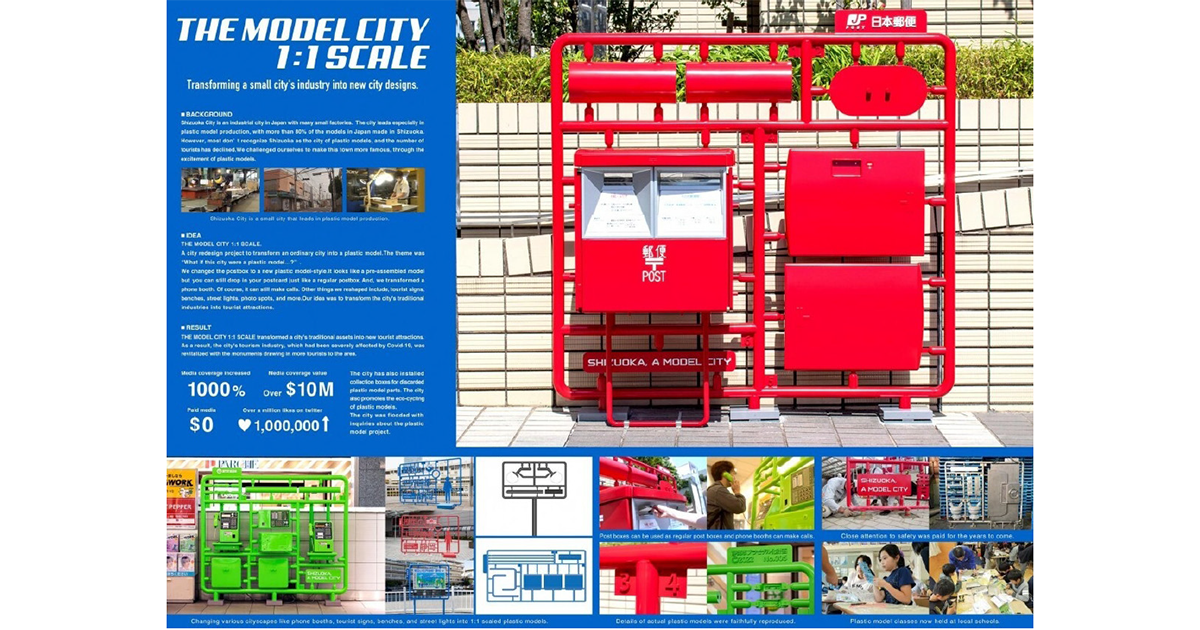
What kind of company is Hakuhodo Kettle?
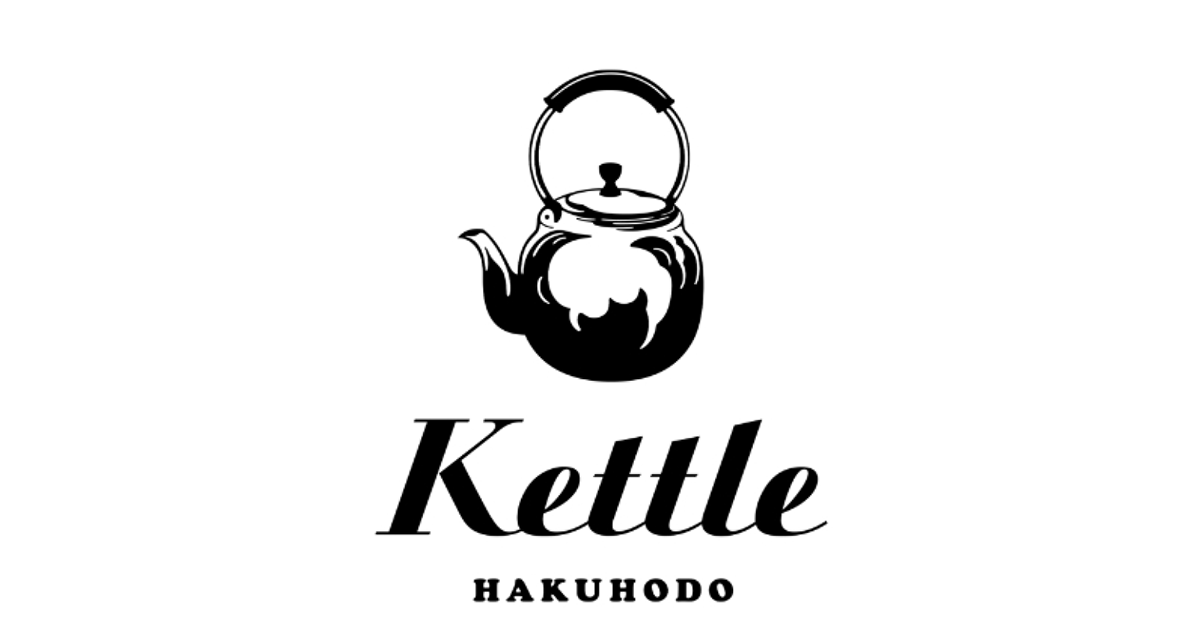
Hakuhodo has several creative subsidiaries with specialized expertise that are independent of the head office. Hakuhodo Kettle, founded in 2006, is a creative boutique that specializes in integrated creative and PR campaigns. We contribute to our clients and society by creating a phenomenon rather than just creating an advertisement. I was co-CEO until 2019. Today, 40 employees are boiling ideas in Kettle and pouring the hot ideas onto our clients.
Like the SKYN campaign, where censorship was different in each country, the standards for taboos are different in each country. What standards do you follow when creating creatives based on taboos?
This is a very difficult but important issue. It’s because an advertisement that is comfortable and beneficial to one person may be offensive and harmful to someone else. Let’s compare the boundary to a goal post in soccer or rugby. Companies, media, and agencies have guidelines that define those goalposts. We make creative decisions based on those guidelines. But the goalposts vary from country to country and society to society. Therefore, when we create a campaign that spans multiple countries, we check both the global guidelines and the country-specific guidelines. In addition, the width of the goalposts may change over time. So we regularly study the latest problematic cases to keep our goalposts updated and our guidelines revised.
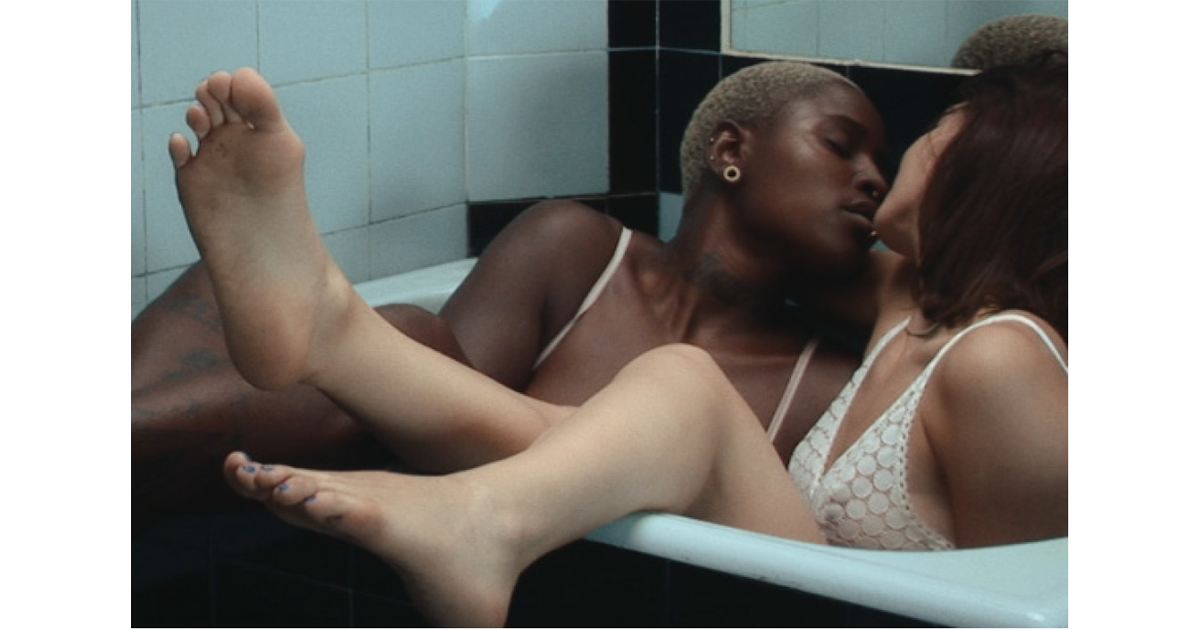
I am curious about the unique Japanese cultural context in which such advertisements can be created, and what you think the unique cultural context of Korea is. I’m also curious about your evaluation of Korean advertising.
I think there are two types of Japanese advertisements. One is simple, beautifully designed and crafted advertisements. The other is chaotic, energetic, animated, digital, and pop advertisements. These two advertising styles are influenced by two Japanese cultural backgrounds. The former is a culture that pursues the simplicity of things, such as Zen, the streets of Kyoto, and the martial arts. The latter is a culture that diffuses things into unknown emotions, such as anime, Akihabara, and video games. We call this “Zen meets Anime.” I believe that this fusion of opposing cultures is what makes Japanese creativity unique. I feel something similar to this cultural fusion in Korea. However, compared to Japan, Korea seems to be more future oriented and more eager to adopt new technologies.
Thank you for providing good insight. Lastly, please share your thoughts on visiting ‘AdAsia 2023 Seoul’.
It was interesting to think about the hot topic of how AI will change the advertising industry from both sides: “Generative AI can replace most of the advertising work” and “There are creative that AI cannot replace. I was honored to be able to lay out my own thoughts and ideas in such a context. It was also a pleasure to meet and talk with so many people. After the seminar, a person just starting to work for an advertising company who had listened to the seminar approached me and we had a conversation, which was also very memorable. What was the most valuable for me was that I could feel the real energy of Seoul, which is different from what I see in the news and dramas.
Thank you for inviting me to ‘AdAsia 2023 Seoul’.
End article
Read article at:
https://static.ad.co.kr/data/lit/j39/54/0e/bb/fc/186364.pdf













